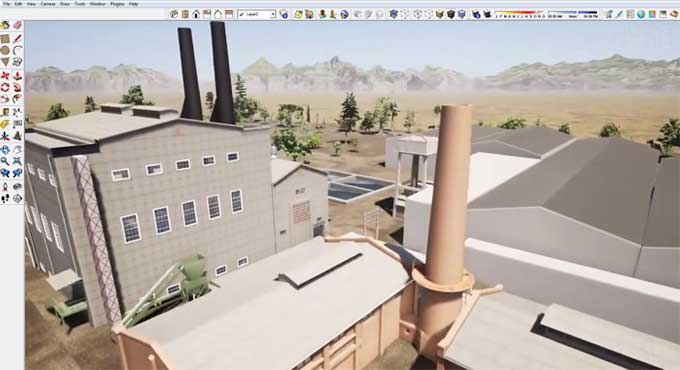Using SketchUp for Historic Preservation

How to create 3D models of historic buildings?
Creating 3D models of historic buildings can be a complex and challenging task, but with the right tools and techniques, it is possible to produce highly accurate and detailed models. Here are some steps to follow:
1. Research: Gather as much information as possible about the building, its history, and its architecture. This can include historical records, photographs, sketches, and plans.
2. Site Survey: Visit the building and take measurements and photographs from multiple angles. Use tools like laser scanning and photogrammetry to capture accurate 3D data.
3. Modelling software: Choose a 3D modelling software that suits your needs and experience level. Popular options include SketchUp, Blender, and Autodesk Revit.
4. Reference images: Use the photos and measurements gathered during the site survey to create accurate 3D models. Reference images can be very helpful in ensuring accuracy.
5. Texturing: Apply textures and materials to the model to add depth and realism. Use reference images to ensure that the texture mapping is accurate.
6. Lighting: Use lighting to create realistic shadows and highlights. Use ambient lighting and directional lighting to create a natural look.
7. Review and refine: Review the model and refine it until you are happy with the results. Be sure to share your work with others to get feedback and to make any necessary changes.
How can you use SketchUp for Historic Prevention?
SketchUp is a powerful tool that can be used for a variety of purposes, including historic preservation. Here are some ways SketchUp can be used for historic preservation:
1. Creating 3D models of historic buildings: SketchUp can be used to create accurate 3D models of historic buildings. This can be useful for documentation purposes, as well as for planning and design purposes.
2. Analyzing and visualizing historic buildings: SketchUp can be used to analyze and visualize historic buildings in a way that is not possible with 2D drawings or photographs. This can help preservationists and architects better understand the building's structure, materials, and details.
3. Simulating proposed changes to historic buildings: SketchUp can be used to simulate proposed changes to historic buildings, allowing preservationists and architects to evaluate the impact of those changes before they are made. This can help ensure that any changes are sympathetic to the building's historic character.
4. Creating virtual tours of historic sites: SketchUp can be used to create virtual tours of historic sites, allowing people to explore and learn about the history of the site in a more immersive way.
5. Developing accurate site plans: SketchUp can be used to create accurate site plans for historical sites, which can be useful for planning and design purposes, as well as for documentation and interpretation.
6. Creating 3D models of lost or demolished buildings: SketchUp can be used to create 3D models of lost or demolished historical buildings, based on historical photographs, drawings, and other sources. This can help preserve the memory and history of these buildings, and can also be used for educational purposes.
7. Collaborating with stakeholders: SketchUp can be used to collaborate with stakeholders on historic preservation projects, allowing everyone to visualize and understand the proposed changes or design solutions. This can be particularly useful when working with community groups, historical societies, or other stakeholders who may have a strong interest in the project.
To learn more, watch the following video tutorial.
Video Source: TheSketchUpEssentials
8. Visualizing changes over time: SketchUp can be used to create visualizations of how a historic site or building has changed over time. This can be useful for illustrating the evolution of a site or building, and can also be used for educational or interpretive purposes.
Overall, SketchUp can be a valuable tool for historic preservationists and architects, helping them to better understand, document, and preserve our built heritage.



